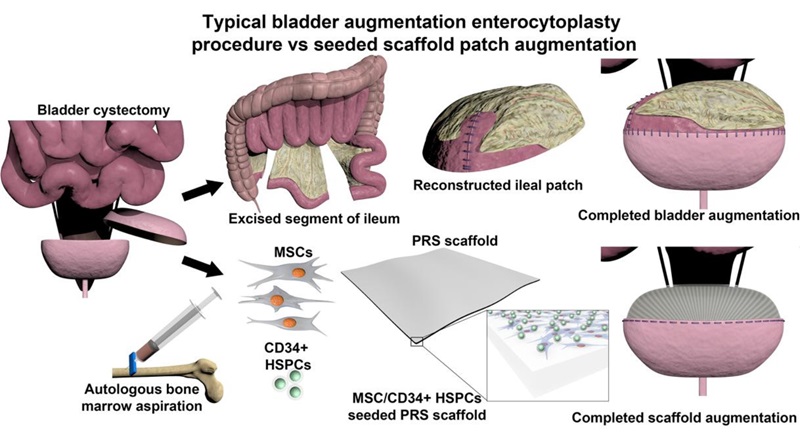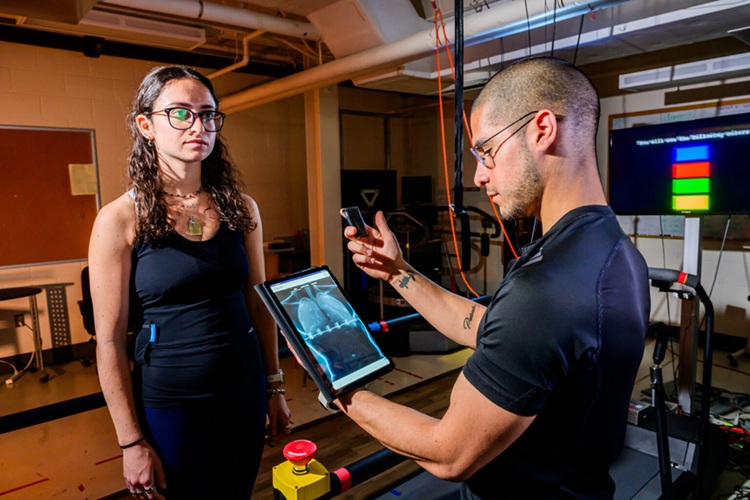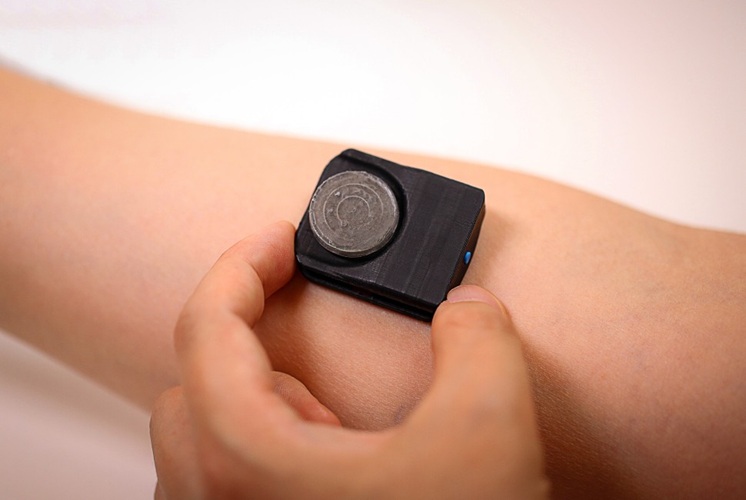Novel Technologies to Improve Bladder Surgery and Monitoring
|
By HospiMedica International staff writers Posted on 26 Jun 2024 |

Many bladder disorders can be managed with non-invasive treatments, but severe conditions might require a surgical approach such as cystectomy, where part or all of the bladder is removed due to reasons such as trauma or cancer. In cases where bladder capacity needs to be increased, bladder augmentation is often performed using a segment of the patient's bowel tissue. This procedure is also common among individuals with spinal injuries or congenital conditions like spina bifida or bladder exstrophy. Although bladder augmentation can significantly enhance a patient's quality of life, it carries a high risk of complications, necessitating extensive postoperative monitoring. To address these challenges, a team at Northwestern University (Evanston, IL, USA), supported by the National Institutes of Health (NIH, Bethesda, MD, USA), is exploring two innovative technologies—one to improve bladder function through a cell-seeded, biodegradable construct that aids tissue regeneration, and another to enhance patient monitoring via an implantable bladder sensor.
Historically, bowel tissue has been the standard material for bladder augmentation despite the clinical complications arising from the physiological and anatomical differences between bowel and bladder tissues. These differences often leave patients with a dysfunctional, infection-prone, and failure-susceptible bladder. The researchers are investigating an alternative approach involving a synthetic scaffold that supports the regeneration of native bladder tissue. This scaffold, seeded with the patient’s own stem cells, supports tissue growth and eventually biodegrades, leaving behind newly formed bladder tissue. Previous attempts to create such scaffolds have not succeeded in clinical trials. For this project, the researchers used citric acid, a naturally occurring molecule, to create a scaffold with customizable properties. In their study, the team used a baboon model to compare the effects of augmenting bladders with the new scaffold versus traditional ileum grafts. Over two years, they observed significantly fewer complications such as urinary tract infections and kidney issues in the baboons implanted with the scaffold compared to those with ileum grafts. Analysis of the regenerated tissue showed that it closely resembled normal bladder tissue in its composition, unlike the predominantly muscular ileum tissue which does not mechanically match bladder tissue.
For post-operative monitoring, typically done through invasive urodynamic testing that only offers a snapshot of bladder function, the researchers developed an implantable sensor. This sensor is designed to provide continuous, remote monitoring of the bladder by transmitting data wirelessly about bladder expansion and contraction, which could potentially alert healthcare providers to complications much earlier. The sensor system includes a strain gauge, a base station with a Bluetooth chip for communication, and a helical coil wire connecting the two. When tested in a baboon model, this sensor effectively transmitted bladder function data for eight weeks, demonstrating its potential to enhance patient care by providing ongoing, real-time insights into bladder health post-surgery. Together, these advances not only promise to improve the management of bladder surgeries but also represent significant progress in regenerative medicine and bioelectronics, offering new ways to treat and monitor patients effectively.
“As biotechnologies advance, they will need to integrate more seamlessly with the human body,” said Jessica Falcone, Ph.D., a program director in the Division of Discovery Science and Technology at the National Institute of Biomedical Imaging and Bioengineering (NIBIB). “This research team has successfully navigated interfacing with the bladder without interfering with its function, bridging the fields of tissue regeneration and flexible bioelectronics. Such advances could enhance the lives of future patients requiring bladder surgery.”
Related Links:
Querrey Simpson Institute, Northwestern University
NIBIB
Latest Critical Care News
- Novel Intrabronchial Method Delivers Cell Therapies in Critically Ill Patients on External Lung Support
- Generative AI Technology Detects Heart Disease Earlier Than Conventional Methods
- Wearable Technology Predicts Cardiovascular Risk by Continuously Monitoring Heart Rate Recovery
- Wearable Health Monitoring Device Measures Gases Emitted from and Absorbed by Skin
- Groundbreaking Technology Rapidly Detects Airborne Influenza Viruses
- Handheld Device Could Transform Heart Disease Screening
- Flexible Semi-Autonomous Robot Could Deliver Medicine Inside Body

- Neurorestorative Treatment Strategies Hold Promise for Most Severe Forms of Epilepsy
- Gene Discovery Could Help Grow New Heart Arteries
- Study Discovers Invisible Transmission of Common Hospital-Associated Infection
- Non-Invasive Neuro-Ophthalmology Techniques Could Detect Brain Tumors Earlier
- Mass Manufactured Nanoparticles to Deliver Cancer Drugs Directly to Tumors
- World’s Smallest Pacemaker Fits Inside Syringe Tip

- AI-Powered, Internet-Connected Medical Devices to Revolutionize Healthcare, Finds Study
- Starfish-Inspired Wearable Tech Enables Smarter Heart Monitoring
- AI Eye Scans Could Help Identify Heart Disease and Stroke Risk
Channels
Critical Care
view channel
Novel Intrabronchial Method Delivers Cell Therapies in Critically Ill Patients on External Lung Support
Until now, administering cell therapies to patients on extracorporeal membrane oxygenation (ECMO)—a life-support system typically used for severe lung failure—has been nearly impossible.... Read more
Generative AI Technology Detects Heart Disease Earlier Than Conventional Methods
Detecting heart dysfunction early using cost-effective and widely accessible tools like electrocardiograms (ECGs) and efficiently directing the right patients for more expensive imaging tests remains a... Read more
Wearable Technology Predicts Cardiovascular Risk by Continuously Monitoring Heart Rate Recovery
The heart's response to physical activity is a vital early indicator of changes in health, particularly in cardiovascular function and mortality. Extensive research has demonstrated a connection between... Read more
Wearable Health Monitoring Device Measures Gases Emitted from and Absorbed by Skin
The skin plays a vital role in protecting our body from external elements. A key component of this protective function is the skin barrier, which consists of tightly woven proteins and fats that help retain... Read morePatient Care
view channel
Portable Biosensor Platform to Reduce Hospital-Acquired Infections
Approximately 4 million patients in the European Union acquire healthcare-associated infections (HAIs) or nosocomial infections each year, with around 37,000 deaths directly resulting from these infections,... Read moreFirst-Of-Its-Kind Portable Germicidal Light Technology Disinfects High-Touch Clinical Surfaces in Seconds
Reducing healthcare-acquired infections (HAIs) remains a pressing issue within global healthcare systems. In the United States alone, 1.7 million patients contract HAIs annually, leading to approximately... Read more
Surgical Capacity Optimization Solution Helps Hospitals Boost OR Utilization
An innovative solution has the capability to transform surgical capacity utilization by targeting the root cause of surgical block time inefficiencies. Fujitsu Limited’s (Tokyo, Japan) Surgical Capacity... Read more
Game-Changing Innovation in Surgical Instrument Sterilization Significantly Improves OR Throughput
A groundbreaking innovation enables hospitals to significantly improve instrument processing time and throughput in operating rooms (ORs) and sterile processing departments. Turbett Surgical, Inc.... Read moreHealth IT
view channel
Printable Molecule-Selective Nanoparticles Enable Mass Production of Wearable Biosensors
The future of medicine is likely to focus on the personalization of healthcare—understanding exactly what an individual requires and delivering the appropriate combination of nutrients, metabolites, and... Read more
Smartwatches Could Detect Congestive Heart Failure
Diagnosing congestive heart failure (CHF) typically requires expensive and time-consuming imaging techniques like echocardiography, also known as cardiac ultrasound. Previously, detecting CHF by analyzing... Read moreBusiness
view channel
Expanded Collaboration to Transform OR Technology Through AI and Automation
The expansion of an existing collaboration between three leading companies aims to develop artificial intelligence (AI)-driven solutions for smart operating rooms with sophisticated monitoring and automation.... Read more















